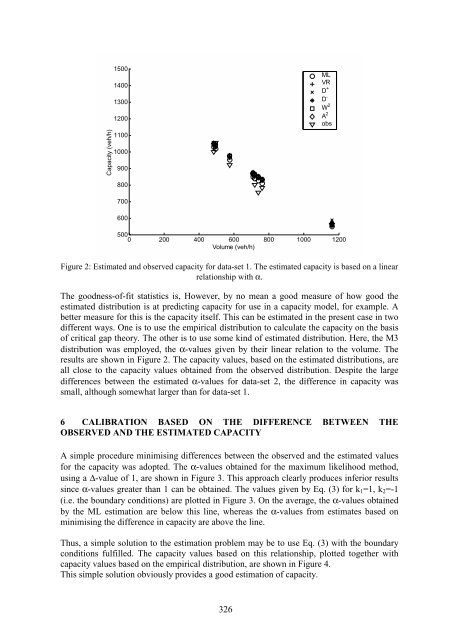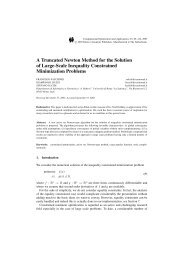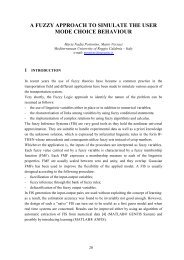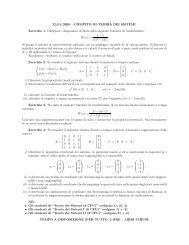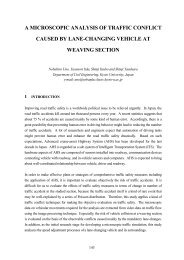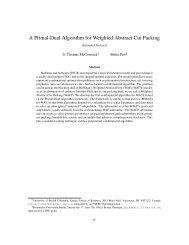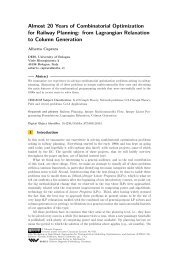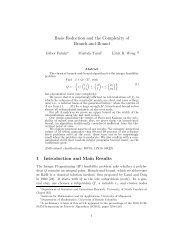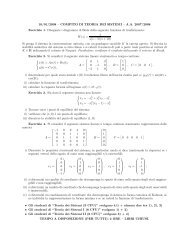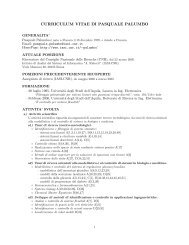CALIBRATION OF HEADWAY DISTRIBUTIONS
CALIBRATION OF HEADWAY DISTRIBUTIONS
CALIBRATION OF HEADWAY DISTRIBUTIONS
You also want an ePaper? Increase the reach of your titles
YUMPU automatically turns print PDFs into web optimized ePapers that Google loves.
Capacity (veh/h)<br />
1500<br />
1400<br />
1300<br />
1200<br />
1100<br />
1000<br />
900<br />
ML<br />
VR<br />
D +<br />
D -<br />
W 2<br />
A 2<br />
obs<br />
800<br />
700<br />
600<br />
500<br />
0 200 400 600 800 1000 1200<br />
Volume (veh/h)<br />
Figure 2: Estimated and observed capacity for data-set 1. The estimated capacity is based on a linear<br />
relationship with α.<br />
The goodness-of-fit statistics is, However, by no mean a good measure of how good the<br />
estimated distribution is at predicting capacity for use in a capacity model, for example. A<br />
better measure for this is the capacity itself. This can be estimated in the present case in two<br />
different ways. One is to use the empirical distribution to calculate the capacity on the basis<br />
of critical gap theory. The other is to use some kind of estimated distribution. Here, the M3<br />
distribution was employed, the α-values given by their linear relation to the volume. The<br />
results are shown in Figure 2. The capacity values, based on the estimated distributions, are<br />
all close to the capacity values obtained from the observed distribution. Despite the large<br />
differences between the estimated α-values for data-set 2, the difference in capacity was<br />
small, although somewhat larger than for data-set 1.<br />
6 <strong>CALIBRATION</strong> BASED ON THE DIFFERENCE BETWEEN THE<br />
OBSERVED AND THE ESTIMATED CAPACITY<br />
A simple procedure minimising differences between the observed and the estimated values<br />
for the capacity was adopted. The α-values obtained for the maximum likelihood method,<br />
using a ∆-value of 1, are shown in Figure 3. This approach clearly produces inferior results<br />
since α-values greater than 1 can be obtained. The values given by Eq. (3) for k 1 =1, k 2 =-1<br />
(i.e. the boundary conditions) are plotted in Figure 3. On the average, the α-values obtained<br />
by the ML estimation are below this line, whereas the α-values from estimates based on<br />
minimising the difference in capacity are above the line.<br />
Thus, a simple solution to the estimation problem may be to use Eq. (3) with the boundary<br />
conditions fulfilled. The capacity values based on this relationship, plotted together with<br />
capacity values based on the empirical distribution, are shown in Figure 4.<br />
This simple solution obviously provides a good estimation of capacity.


